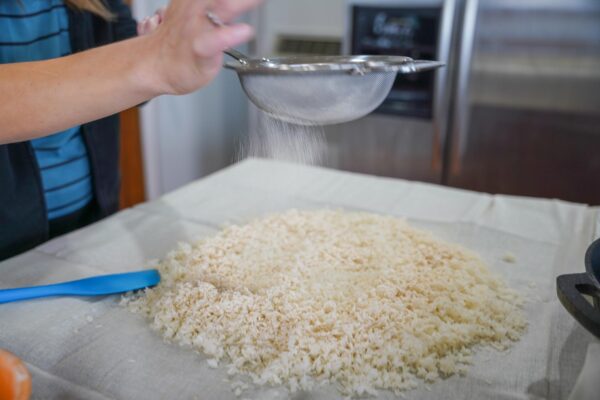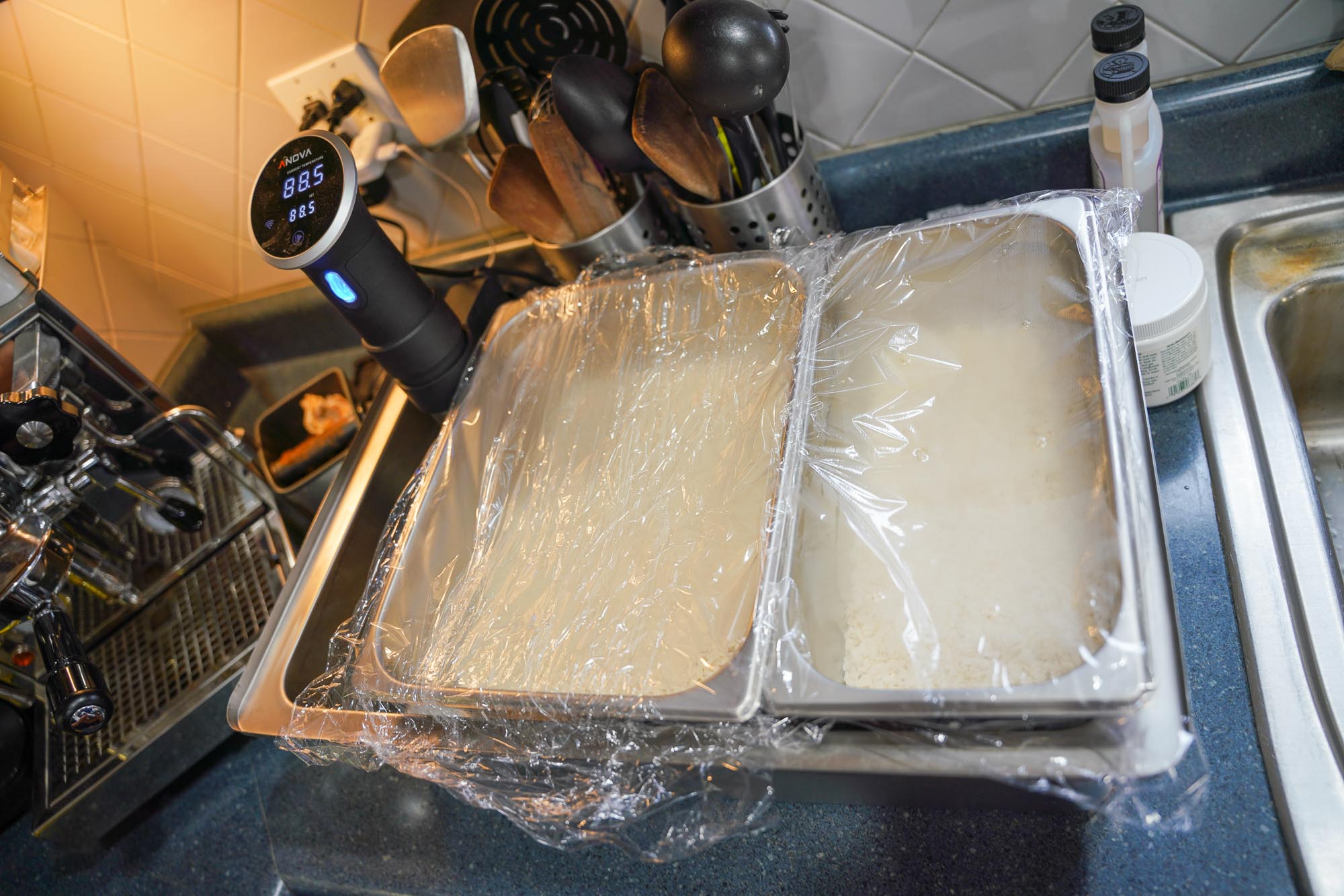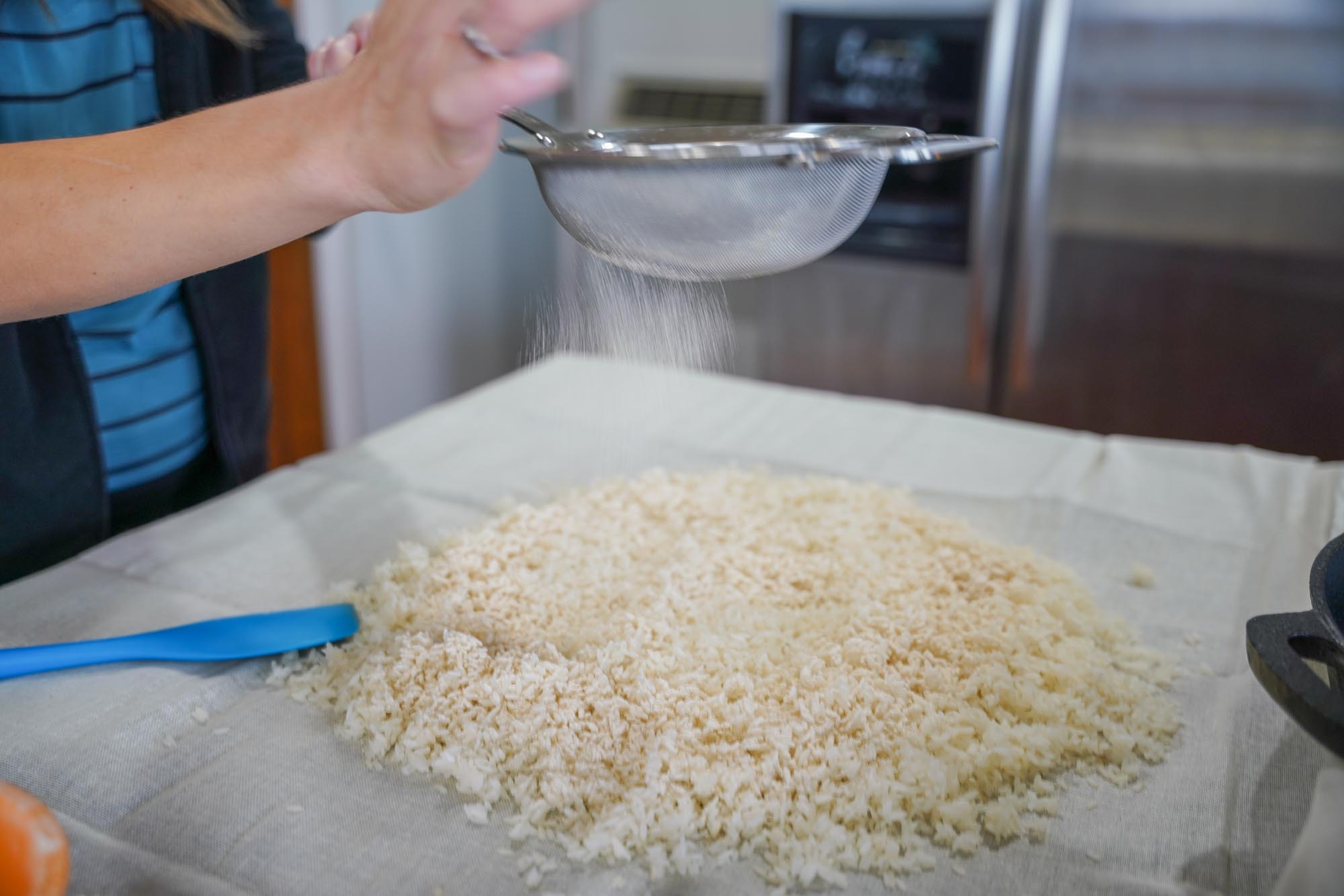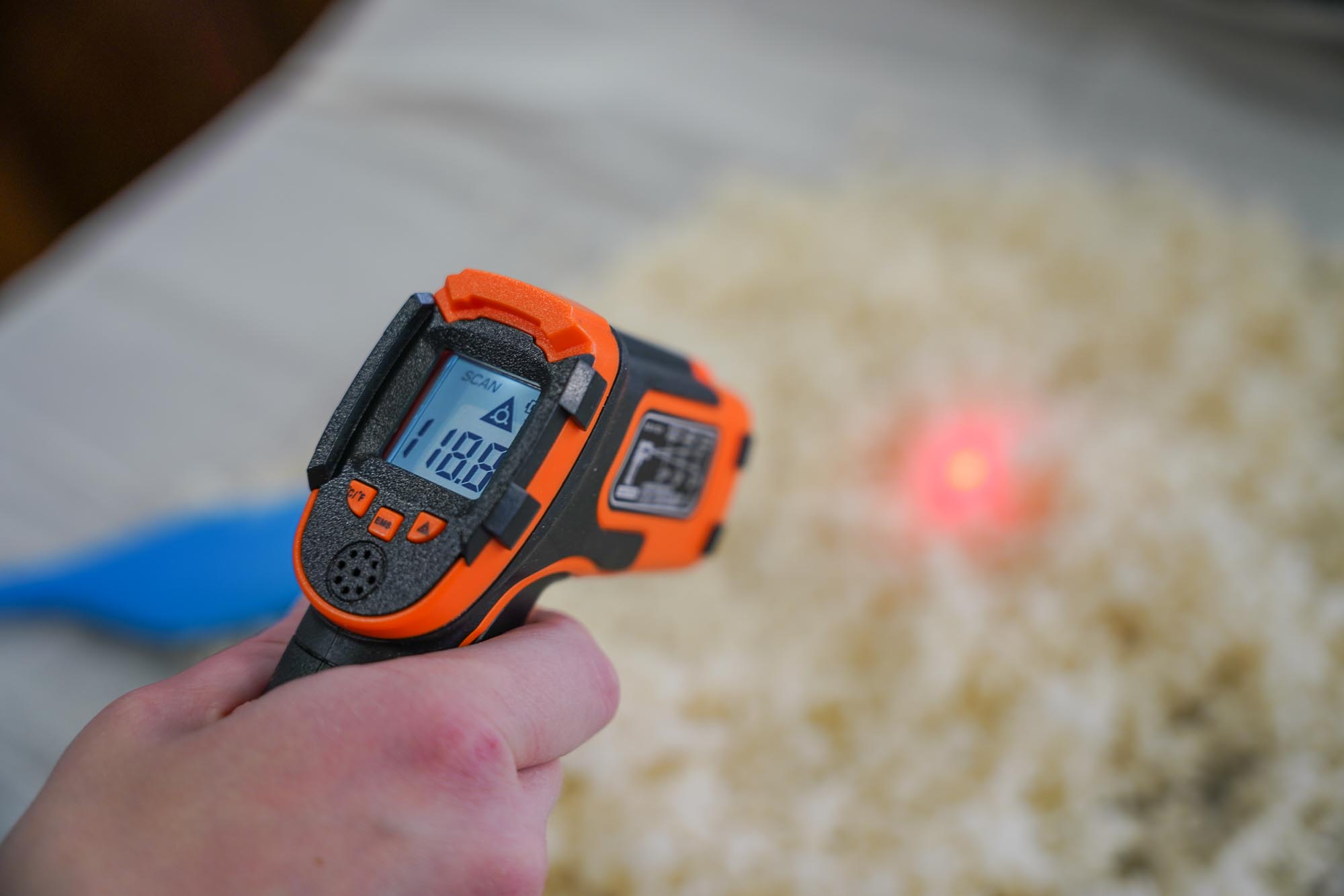Disclaimers: Our site uses demographic data, email opt-ins, display advertising, and affiliate links. Please check out our Terms and Conditions for more information.
If you're thinking about diving into the world of fermentation, one of the most important things to plan out is how you will maintain specific temperatures for your ferments during incubation. Provide too much heat, and the organisms will die. Provide too little heat, and they may not reproduce as they should.
Of course, not all ferments require elevated temperatures – lacto ferments like sauerkraut and pickles, for example, are simply done at room temperature. But if you want to explore the worlds of koji, tempeh, miso, yogurt, sourdough, and more, you'll need to maintain elevated temperature ranges that can be quite narrow.
So in this one, we wanted to share how we built our own homemade incubator for fermentation projects as it ended up being rather easy!
Temperature Matters in Incubation
Before you buy a single item, you'll need to consider what temperature your ferment needs and over what time period. If there's one specific product that you're interested in making, look into what temperature the process requires and how long you need to maintain that temperature. Repeat this for any additional projects you may be interested in so you know your desired temperature ranges.
Many ferments we make are happy in the 80-90 °F range, and there are certainly plenty of ways to achieve these temperatures using things you may have around the house. Coolers, heating pads, and ovens with pilot lights are just a few of the setups we've seen that can work. But the other important question is how long will you have to maintain this temperature? Typical koji-based ferments require about 48 hours to complete, for example.
This begs a few simple questions. Do you really want to be coddling a complicated and finicky setup for this long? Can you give up a trusty kitchen device, like an oven, for days on end? If the answer to any of these is no, especially if you plan to have regular fermentation projects, you may want to build a dedicated system.
Over our several years of experimenting, we've tried several options but we think we've finally arrived at our favorite setup: a sous vide immersion circulator combined with hotel pans. This setup offers the best of all worlds namely great temperature control and simplicity.
Our Incubation for Fermentation Setup
Our incubation setup involves the following components:
- Immersion circulator: We have used the Anova immersion circulator (sous vide) for many years and absolutely love it. Our model can maintain a large temperature range from 77 °F to 210 °F. It can heat a large volume of water quickly, accurately, and evenly. We've checked the water temperature with a Thermapen and it's always within about one degree of what we set it to, even in the farthest corners of our largest containers.
- A giant hotel pan (22 inches x 14 inches x 6 inches deep): This hotel pan is the perfect size for holding a large amount of whatever we're fermenting. For koji-based ferments, it's important that the substrate (rice, soybeans, etc.) isn't thicker than about 1 to 1.5 inches so that it doesn't get too hot during fermentation. Having a large pan like this lets us ferment a good amount of product without having too thick of a layer.
- Smaller hotel pans that float in the larger one: We have two 4-inch deep hotel pans – a half size and a one-third size. This setup leaves enough room for the immersion circulator to hang out in the water bath on one end. You could also just get a two-thirds size hotel pan; it really depends on what you'll be fermenting and the batch size. We like having the two separate pans as it allows for more flexibility in batch sizes – if we're doing a smaller batch we can just use one of the pans, or if it's a larger batch we can use both.
- Note: We purchased our hotel pans in-person at a restaurant supply store to ensure that they could nest within each other properly as shown in our photos. When buying online, you may have to guess what products fit together.
- Tea towels to cover the hotel pans: We've tried covering our ferments with plastic wrap (pictured) but think it allows too much condensation to form which then drips back down into the ferment. On the other side of the spectrum, leaving the ferments completely uncovered generally dries them out too much. Covering with thin tea towels maintains just the right amount of moisture, in our experience.
- Heating mat for on top (optional): Depending on your setup, you may find you want to provide some heat above the substrate as well. We do this with a temperature-controlled heating mat with built-in feedback control. However, this is listed as optional as we've found many of our incubations work just fine without it- although it is nice to have on hand all the same.
- Note: Many incubations change from being endothermic (absorbing heat) to exothermic (generating heat) over the course of the first day or so. As such, you may need to remove the heating mat after a certain period of time and be more focused on stirring your substrates if used to prevent heat build-up.
- Temperature measuring tools (optional): You may also want to have some temperature measuring tools on hand like an instant-read thermometer or an IR temperature reader just to measure the temperatures of the water and substrates. As there will always be some heat loss, you may have to adjust your temperatures within a few degrees to compensate to get your substrate temperature to be within the desired range.
That's it! From there all you have to do is fill the larger hotel pan with water, set your sous vide to the precise temperature for your incubation, and place the second pan on top, cover with a towel, and periodically check the temperature as you wait.
While we can't say this is a 100% foolproof method for how to make koji at home, it is pretty close and we absolutely love this simple setup for our projects!
Are you ready to get started but need to pick up spores or other fermentation products? Grab some great products today!
Pick Up Fermentation Gear Today

Improve your fermentation game with some great new products from Cultures for Health- a great spot for buying cultures, spores, and more!






